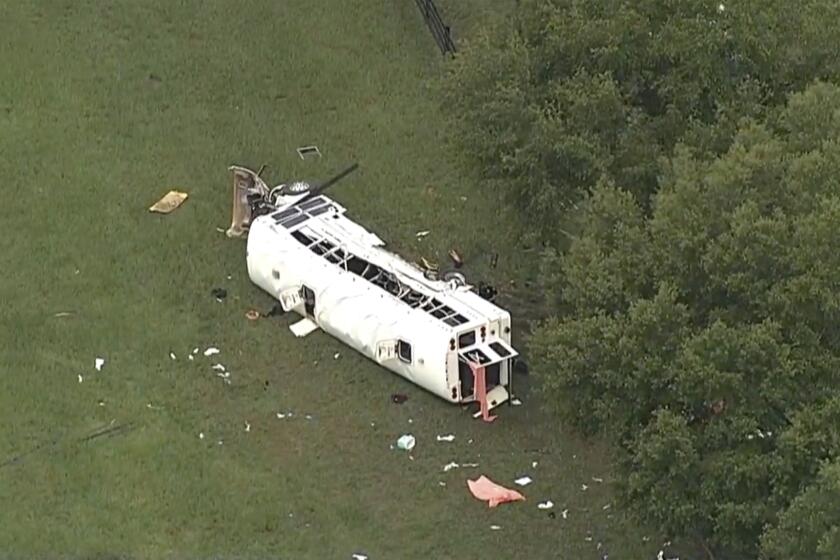Pets of the Poor Receive Care in African Project
Shira, a sad-eyed mutt with swollen legs and crushed hips, can barely limp along the dirt roads of the squatter camp where she lives alongside South Africa’s destitute--people who can barely afford to care for themselves, let alone their pets.
But for Shira, hope has come in the form of animal welfare activists who visit squatter camps like Zandspruit, on the outskirts of Johannesburg. They come to treat sick cats and dogs but leave helping the people as well as their animals.
Cora Bailey, who founded Community-Led Animal Welfare, and her assistant loaded Shira into a rusty wheelbarrow and carted her to their van so they could drive her to a veterinarian’s office.
“Generally in these settlements these animals will just die a long and lingering death,” Bailey said.
Bailey’s organization started going to townships in 1998 to offer free animal welfare services, including deworming, sterilization and dipping the animals in solutions that repel ticks and fleas. They have since sterilized more than 6,000 dogs and cats.
But Bailey said their mission goes beyond the physical well-being of the animals. “If you teach a child to love an animal, they learn to love human beings,” she said.
Social services are scarce in South Africa’s overcrowded squatter camps, where thousands of people live in close quarters, sharing small makeshift corrugated tin shacks and a handful of portable toilets.
When Bailey and her staff make the rounds looking for animals to treat, they are besieged by pleas for help as varied as clothes and toys for a nursery school for abandoned children to assistance for AIDS victims.
Bailey, a tall, thin woman with wispy blond hair and a warm smile, said it’s been a challenge making the project work in such poor areas.
With financial help from the International Fund for Animal Welfare, her group provides basic animal welfare services on a rotating basis to 17 squatter camps--areas that often lack electricity, running water or formal buildings to set up operations.
Nearby schools or churches sometimes let the project use spare rooms to sterilize animals. Otherwise, they use donated empty railway cars for the procedures.
Where there are no facilities, Bailey and her team set up dipping tubs and tables covered with syringes and medicine bottles on patches of gravel outside.
Groups of children often gather around the dipping tub and help dunk their pets in the milky liquid. They laugh when the dogs jump out and shake themselves, spraying everyone nearby.
More to Read
Start your day right
Sign up for Essential California for news, features and recommendations from the L.A. Times and beyond in your inbox six days a week.
You may occasionally receive promotional content from the Los Angeles Times.






